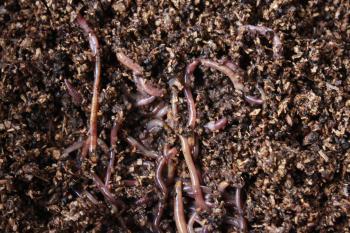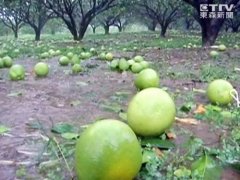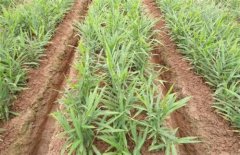How to deal with Kitchen waste and how to turn Kitchen waste into Worm manure compost
Earthworm manure research and development: your home kitchen waste, how do you deal with it, if you are thrown away, in fact, this is also a waste, the following will teach you how to use kitchen waste to make valuable fertilizer.
Food waste is the organic waste produced by every household every day. Due to the special eating habits of Chinese people, the weight ratio of general kitchen waste is about 30%. If such a huge amount of kitchen waste can be effectively treated and further utilized, it will not only prolong the service life of landfill sites and greatly reduce the fuel cost of incinerators, but also save a lot of manpower, material resources and transportation costs of environmental protection organizations. The compost is made for the purpose of treating household kitchen waste. It is intended to utilize the special habits of certain specific species of earthworms to digest and decompose household kitchen waste into a wide range of organic fertilizers, which can provide unparalleled contributions to many environmental protection undertakings currently developing (such as organic agriculture).

Preparation before production
I. Equipment, materials and devices
1. Plastic bucket (rectangular): the size depends on the number of breeding, about 30-50 liters capacity is more suitable for general family use, breeding about 2000 - 3000 earthworms, two small holes with a diameter of about 2cm drilled at the bottom of the bucket, in order to remove excess water.
2. Plastic anti-skid plate (bathroom): spread at the bottom of the bucket, so as not to accumulate water at the bottom of the bucket, which is not conducive to earthworm activities.
3. Plastic screen (for screen window): cover the screen flat on the sliding plate to avoid earthworms and feeding materials falling onto the sliding plate.
4. Sprinklers or sprinklers: water the flowers can be used.
5. Thick paper or newspaper: used to cover the shade.
II. Earthworms
The red earthworms of Eisenia and Penonyx were used in this experiment. The two genera were red composts earthworms. The average weight of adult earthworms was 0.5 g, the body length was 7-10 cm, and the diameter was 0.3-0.5 cm. Most of them grew in dark, moist, organic soil or fermented animal faeces 5-10 cm above the ground. Daily food intake is approximately equal to 70% to 100% of their body weight. The two genera of earthworms eat a lot, and the reproductive period from infancy to adulthood is only about 4-6 months. The red earthworms of these two genera can be collected from moist rotten soil in sewers all over the island and from straw piles of pig farmers.
III. BASIC OR COATING MATERIALS
As a material laid on the bottom of the bucket for the first time and after each addition of kitchen waste, the material coated on the upper layer can also be used as food for earthworms. For example: peat moss, sawdust (preferably stacked), bagasse, coarse chaff, crushed peanuts, waste paper (shredded, soaked and softened after draining), etc. The above materials can be used singly or in combination, but it is preferred that they contain about 40% water when used.
IV. Main materials
Household kitchen waste, including household leftovers, all kinds of peel, tea residue, leftover juice, etc., even the remnants of meals can be.
production process
First, the plastic bucket at the bottom of the flat stop slide, and covered with gauze, and then the basic material into a thickness of about 10-15 cm, fully sprinkle and turn the material, so that the inside and outside evenly wet, and slightly tight, to prevent excessive evaporation of water.
2. About one kilogram of earthworms (about 2,500 adult earthworms and 4,000- 6,000 medium and young earthworms) or more will be transferred, depending on the estimated daily kitchen surplus. Earthworms will lurk in this material for several days, adapt to the new environment activity is relatively slow, and feed on the basic material, this period every 1-2 days gently sprinkle on the surface of the material, keep wet.
3. Cover the top of the device with thick cardboard or this board to avoid direct sunlight on the surface and evaporate too much water to affect the earthworm activity space.
Four, a week later, can be put into the kitchen waste, can first daily kitchen waste accumulation in a covered plastic bucket for about 3-4 days, accumulate a certain amount and then put together; in principle, put the kitchen waste, evenly spread the basic materials and then spread a thin layer of basic materials, thickness to cover up the kitchen waste for the principle, and then gently sprinkle on the surface.
5. Earthworms begin to eat a large amount after adapting to the environment. If there is insufficient kitchen waste, they will feed on basic materials. If there is sufficient food, earthworms grow rapidly. Adult earthworms lay 1-2 egg sacs every week. The eggs hatch into young earthworms after three weeks. Each egg hatches one to several. Thus, it is passed down from generation to generation and multiplied after about 4-6 months. Earthworm excretions are also secreted, accumulated and thickened, and earthworms automatically climb up the newly placed materials and kitchen waste layers to continue feeding.
implementation results
About 3-4 months after implementation, the kitchen waste near the bottom of the device, after full ingestion and digestion by earthworms, most of them become odorless, odorless, black, brown, fine powder or fine granular earthworm soil. It feels soft and elastic to the touch of hands, slightly sticky, and easy to form lumps when rubbed.
1. In the process of forming earthworm droppings, most earthworms have crawled to the upper layer to feed on new kitchen waste. Therefore, when taking earthworm droppings, the upper layer (about 10-15 cm) can be moved to a new culture tank to continue feeding kitchen waste. The excavated earthworm droppings only contain a few earthworms and earthworm eggs.
2. If the above method is normally implemented, after the first excavation of earthworm dung, about every 6-8 weeks, the amount of earthworm dung can be excavated approximately equal to the last time.
3. Earthworm dung soil contains nitrogen 1-2%, phosphorus 0.2-1.0%, potassium 0.5-1.0%, calcium 0.7-1.5%, magnesium 0.15- 0.4%, Copper 10-25ppm, iron 300-600ppm, organic mass 50-60%, pH 6-7.
Earthworm compost is rich in all kinds of nutrients needed by plants. It can be directly used as organic fertilizer. It can also be combined with other kinds of organic fertilizers to make various fertilizers for different purposes. It can also be directly used as fertilizer for popular organic cultivation.
- Prev

How to do composting: production and utilization of Wendan fruit drop composting technology
The production and utilization of Wendan fruit composting Hualien area is often hit by typhoons every year during summer and autumn, and Wendan fruit ripening period occurs in July and August, so it often causes great losses to fruit farmers. A large number of Wendan fruit drop has a great impact on the environmental hygiene of the orchard, not only
- Next

How to fertilize the soil: the main source of crop nutrients and the key points of land fertilization management
Fertilizer management: to achieve the goal of sustainable agricultural production, to make nature circulate continuously and live forever. This is the ecological balance we need to achieve. The main significance of the fertilizer management of sustainable agriculture is to supply crop support by using natural materials that do not consume energy.
Related
- Fuxing push coffee new agricultural production and marketing class: lack of small-scale processing plants
- Jujube rice field leisure farm deep ploughing Yilan for five years to create a space for organic food and play
- Nongyu Farm-A trial of organic papaya for brave women with advanced technology
- Four points for attention in the prevention and control of diseases and insect pests of edible fungi
- How to add nutrient solution to Edible Fungi
- Is there any good way to control edible fungus mites?
- Open Inoculation Technology of Edible Fungi
- Is there any clever way to use fertilizer for edible fungus in winter?
- What agents are used to kill the pathogens of edible fungi in the mushroom shed?
- Rapid drying of Edible Fungi

